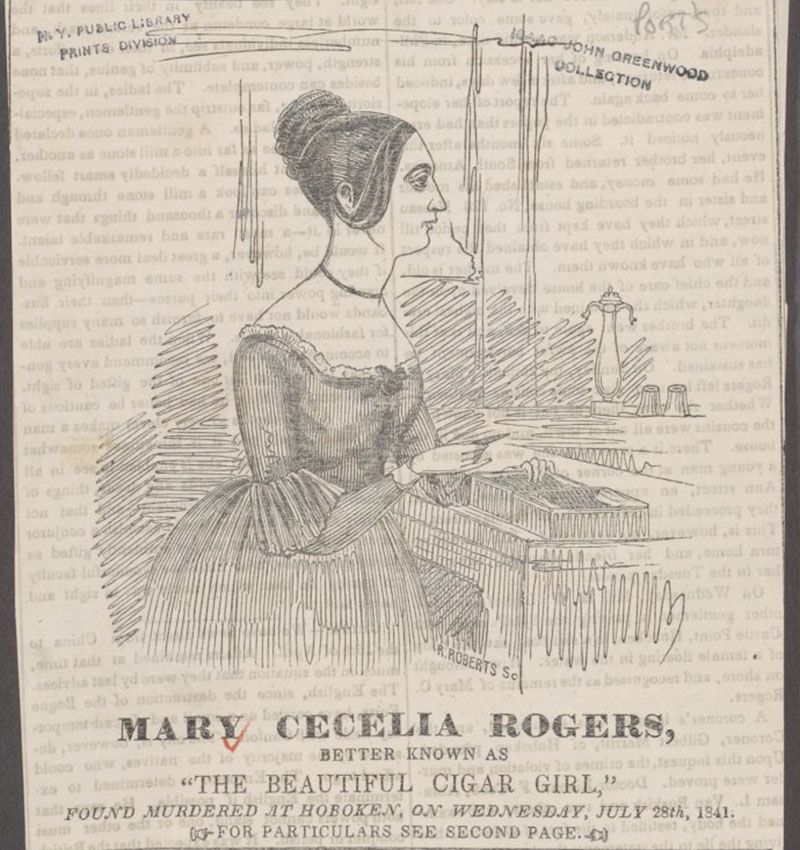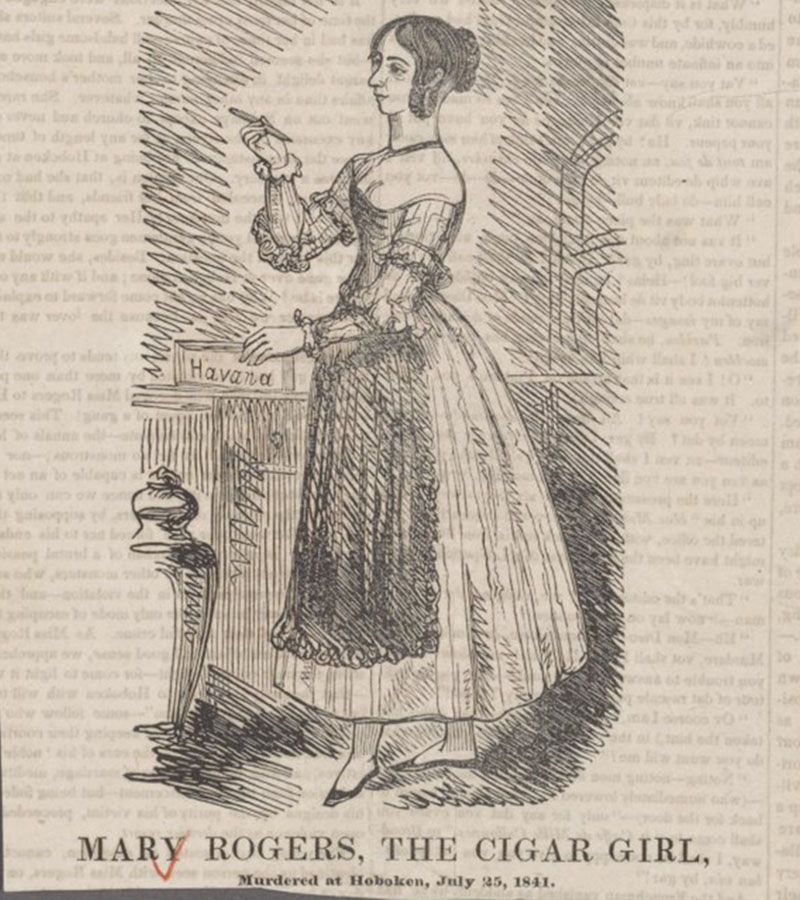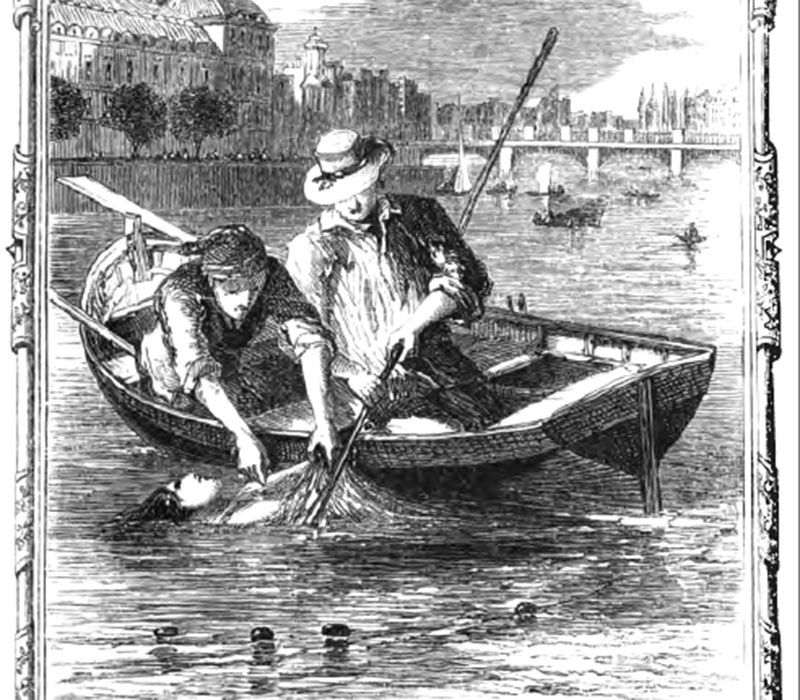Last Chance to Catch NYC's Holiday Notalgia Train
We met the voices of the NYC subway on our nostalgia ride this weekend!


It was the beauty of 20-year-old Mary Cecilia Rogers that captured the attention of cigar store owner John Anderson. Frequented by journalists and influential authors such as James Fenimore Cooper, Washington Irving, and Edgar Allen Poe, his cigar store — Anderson’s Tobacco Emporium — was one of the most popular in the city. Despite exclusively helping her widowed mother around the house in the past, Rogers’ kind demeanor, luscious brown hair, slender figure and clear complexion only brought more locals and tourists to buy his cigars. Her story reveals the power beauty holds in captivating a city — and the weakness beauty carries in the face of violence.

Eventually known as “the beautiful cigar girl,” Mary Rogers became a popular name throughout New York City. Acting as a clerk at Anderson’s store, she often playfully flirted with customers, as recounted by regulars at the store. However, she never allowed the men to pursue her. It is said that she even rejected Anderson’s romantic advancements.
During her employment, Daniel Payne, a cork cutter, proposed to Rogers. He lived in the boarding home Rogers’ mother operated and adored the girl for her kindness and beauty. She accepted his proposal in June 1940, and the couple planned to marry in the near future. However, her mother’s misgivings about the marriage prompted Rogers to break off the engagement. This was the second engagement Rogers broke off. Previously, she ended her relationship with law clerk Alfred Crommelin. She remained on amicable terms with both men.
On July 25, 1841, Rogers left the city, telling Payne that she was visiting a relative. A storm approached that evening, leading Rogers’ family to expect her return the following morning to avoid the horrible weather. When the cigar girl failed to return the next day, Payne and Rogers’ mother spoke to the relative Mary whom she allegedly visited. The relative claimed she had not been expecting Rogers nor had Rogers ever arrived at her home. Payne was the last person to see Rogers alive.
Rogers’ family still had hope, for the cigar girl had vanished four years prior only to reappear ready to return to the cigar store. It was on July 28, three days after Rogers left the city, that men walking near Sybil’s Cave in Hoboken saw something large floating in the river. After fetching a rowboat and inspecting the mysterious item in the water, the men realized it was the body of a dead woman. With a torn dress, a tight strip of cloth tied around her neck and visible injuries on her body, it was evident that the girl had been murdered and potentially raped. When the men returned to shore, Crommelin identified the body as Mary Cecilia Rogers, his former lover, and the beautiful cigar girl.

The journalists and editors who frequented the cigar store prioritized Rogers’ murder, putting it on the front page of major newspapers. Some speculated Payne had murdered Rogers, while others suspected that she was a victim of an unprovoked crime. Some even claimed a former customer at the cigar store had murdered the beloved young woman.
Despite the craze that developed surrounding the murder, only a few came forward with evidence. One reported they saw Rogers get off a ferry in Hoboken with a group of tough-looking men. The owner of a Hoboken tavern, Frederica Loss, reported she saw Rogers walk into the woods with a man of dark complexion. She heard a scream sometime after they entered the woods but only connected it to Rogers after her sons found a pile of clothes in the woods two months after Rogers’ murder. Those who spoke with Rogers the day she disappeared confirmed the mildewed white petticoat, silk scarf, parasol, and linen handkerchief embroidered with the initials “M.R.” belonged to the young woman. The boys also reported spotting a body-sized path leading from the spot where they found the clothes. The path later faded away.
Payne, a noted alcoholic driven mad by the death of his beloved, traveled to Hoboken on October 7, 1841. After getting drunk, Payne visited each spot he suspected Rogers had visited on the day of her death. He then drank a vial of poison. Someone found his dead body at the location Loss’ sons found Rogers’ clothes. A suicide note read, “To the World here I am on the very spot. May God forgive me for my misspent life.” Some suspected this as admittance to the murder, while others guessed it just alluded to his love for Mary Cecilia Rogers.

Poe immortalized the mystery in his short story “The Mystery of Marie Rogêt.” Although the murder mystery takes place in Paris, it resembles the events that transpired during Rogers’ life. Marie Rogêt, however, worked in a perfume store.
“The extraordinary details which I am now called upon to make public,” Poe wrote at the beginning of the story, “will be found to form, as regards sequence of time, the primary branch of a series of scarcely intelligible coincidences, whose secondary or concluding branch will be recognized by all readers in the late murder of MARY CECILIA ROGERS, at New York.”
Although the murder of Mary Cecilia Rogers still remains a mystery today, many continue to speculate its details. After one of the Loss boys shot their mother, sending her into an injured delirium, she mentioned Rogers and a failed abortion. This only added to the mystery of her death. However, the injuries throughout Rogers’ body contradict the failed abortion theory.
Next, check out the details of the 1964 Kitty Genovese murder!
Subscribe to our newsletter